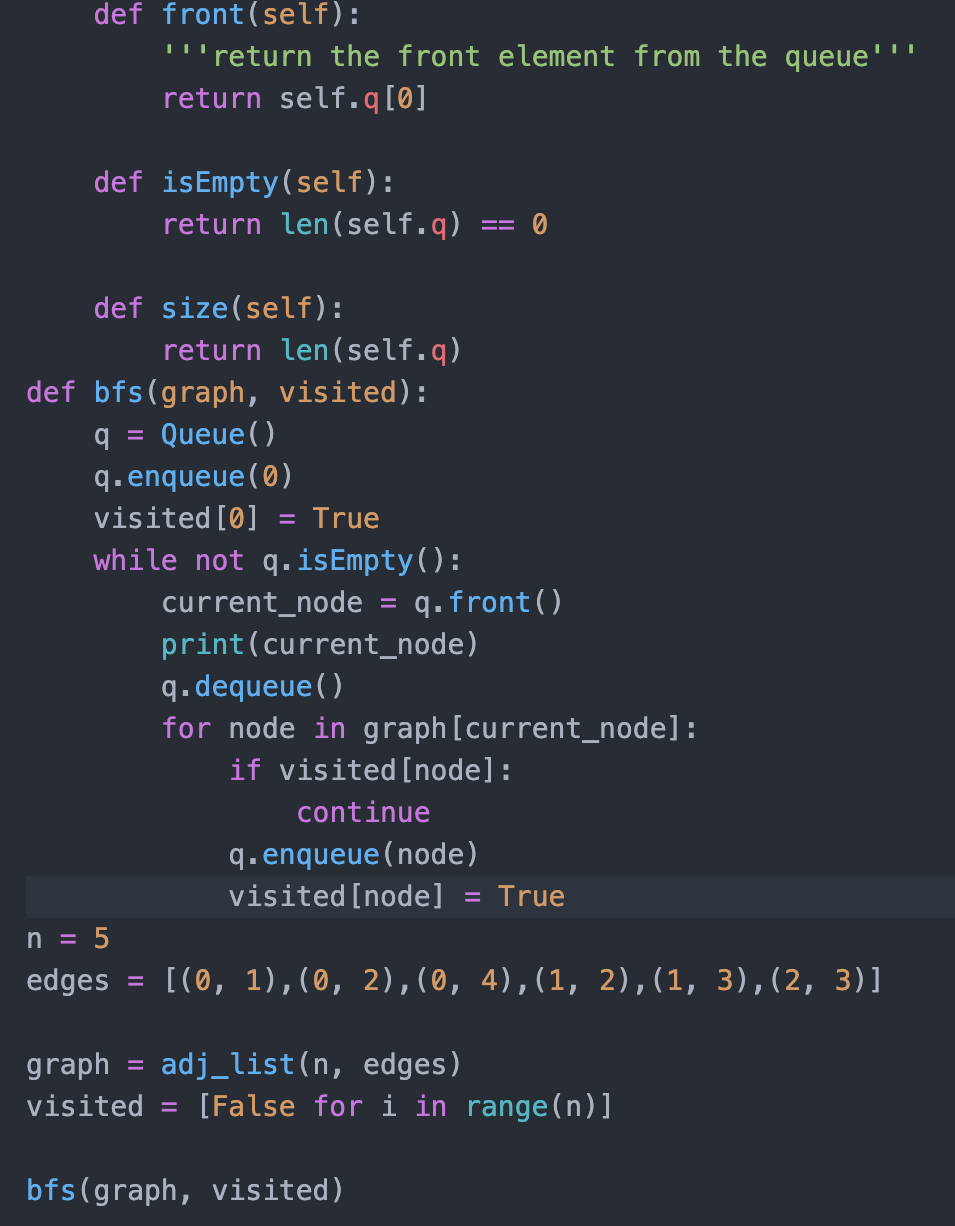Question
convert the bfs from python to java and draw a flowchart def adj_list(n, edges): graph = [[] for i in range(n)] for e in edges:
convert the bfs from python to java and draw a flowchart
def adj_list(n, edges): graph = [[] for i in range(n)] for e in edges: a = e[0] b = e[1] graph[a].append(b) graph[b].append(a) return graph class Queue: def __init__(self): '''Make a new empty queue''' self.q = []
def enqueue(self, o): '''add o to the end of the queue''' self.q.append(o)
def dequeue(self): '''remove the front element from the queue''' return self.q.pop(0)
def front(self): '''return the front element from the queue''' return self.q[0]
def isEmpty(self): return len(self.q) == 0
def size(self): return len(self.q) def bfs(graph, visited): q = Queue() q.enqueue(0) visited[0] = True while not q.isEmpty(): current_node = q.front() print(current_node) q.dequeue() for node in graph[current_node]: if visited[node]: continue q.enqueue(node) visited[node] = True n = 5 edges = [(0, 1),(0, 2),(0, 4),(1, 2),(1, 3),(2, 3)]
graph = adj_list(n, edges) visited = [False for i in range(n)]
bfs(graph, visited)


Step by Step Solution
There are 3 Steps involved in it
Step: 1

Get Instant Access to Expert-Tailored Solutions
See step-by-step solutions with expert insights and AI powered tools for academic success
Step: 2

Step: 3

Ace Your Homework with AI
Get the answers you need in no time with our AI-driven, step-by-step assistance
Get Started


